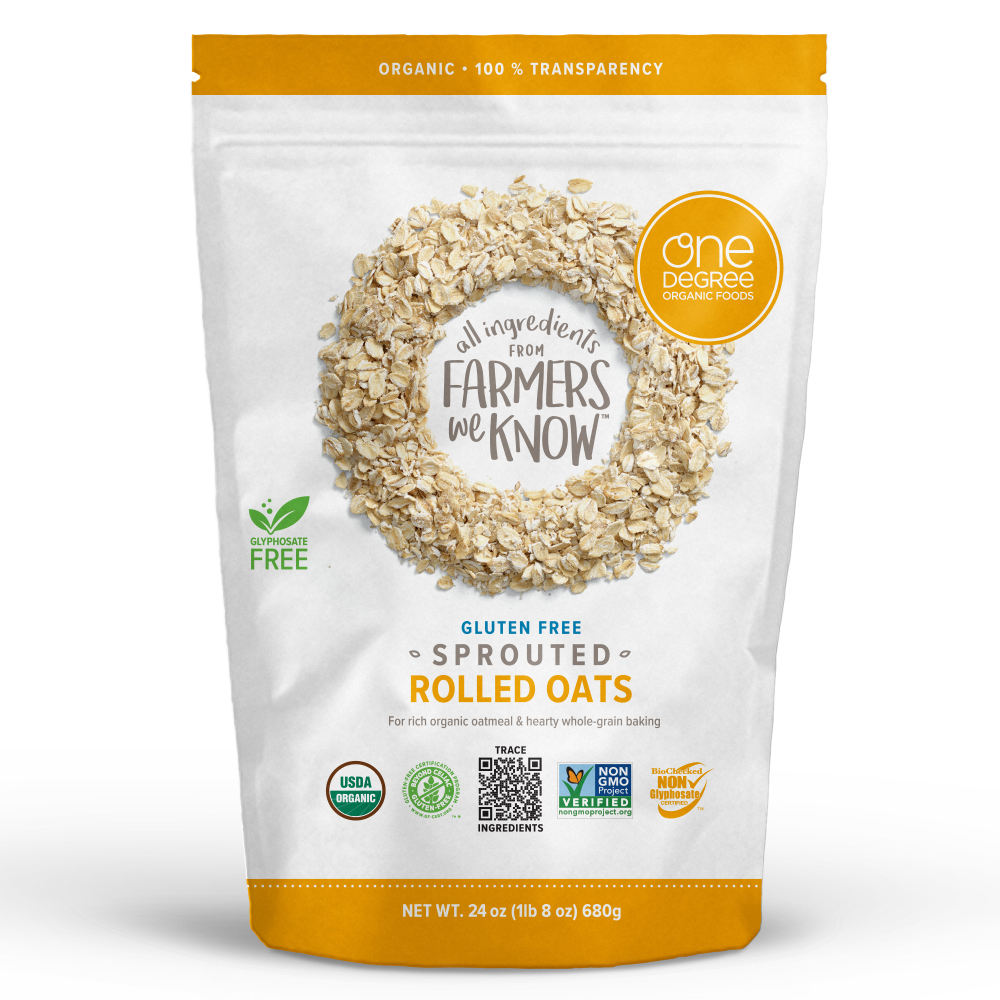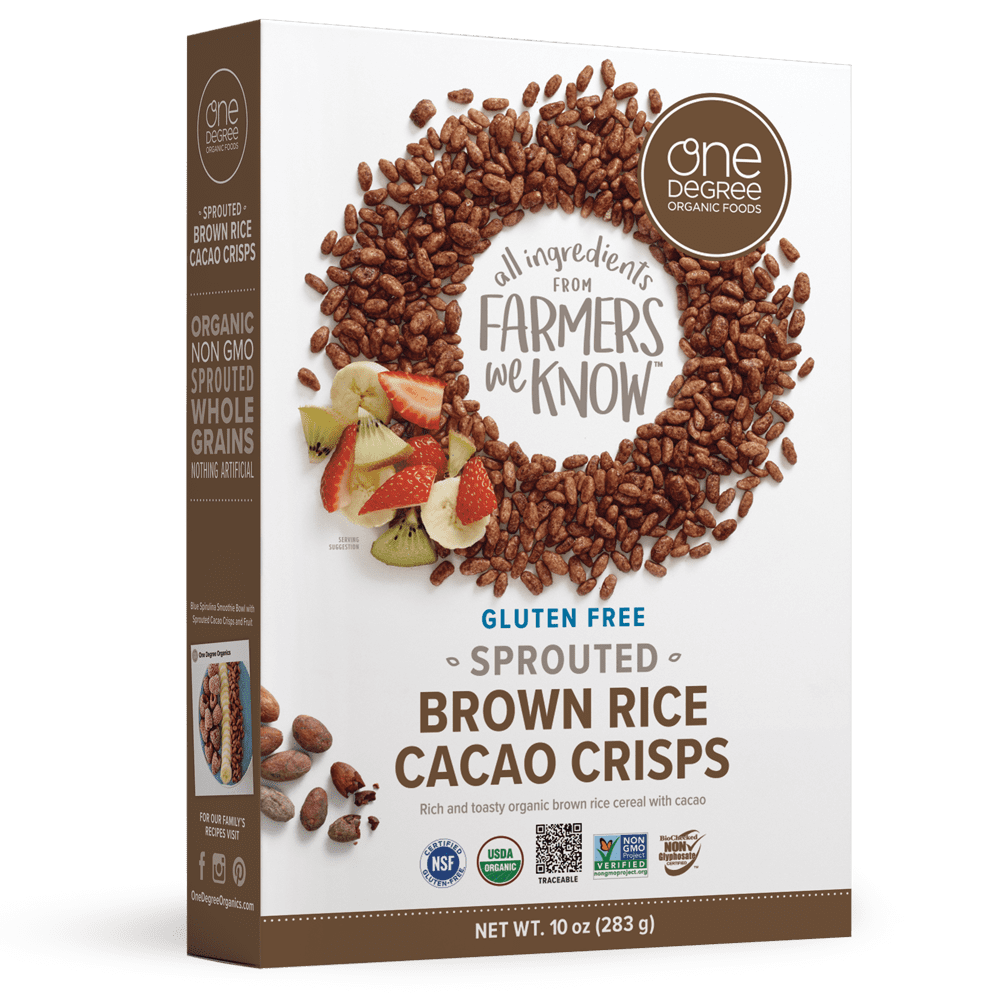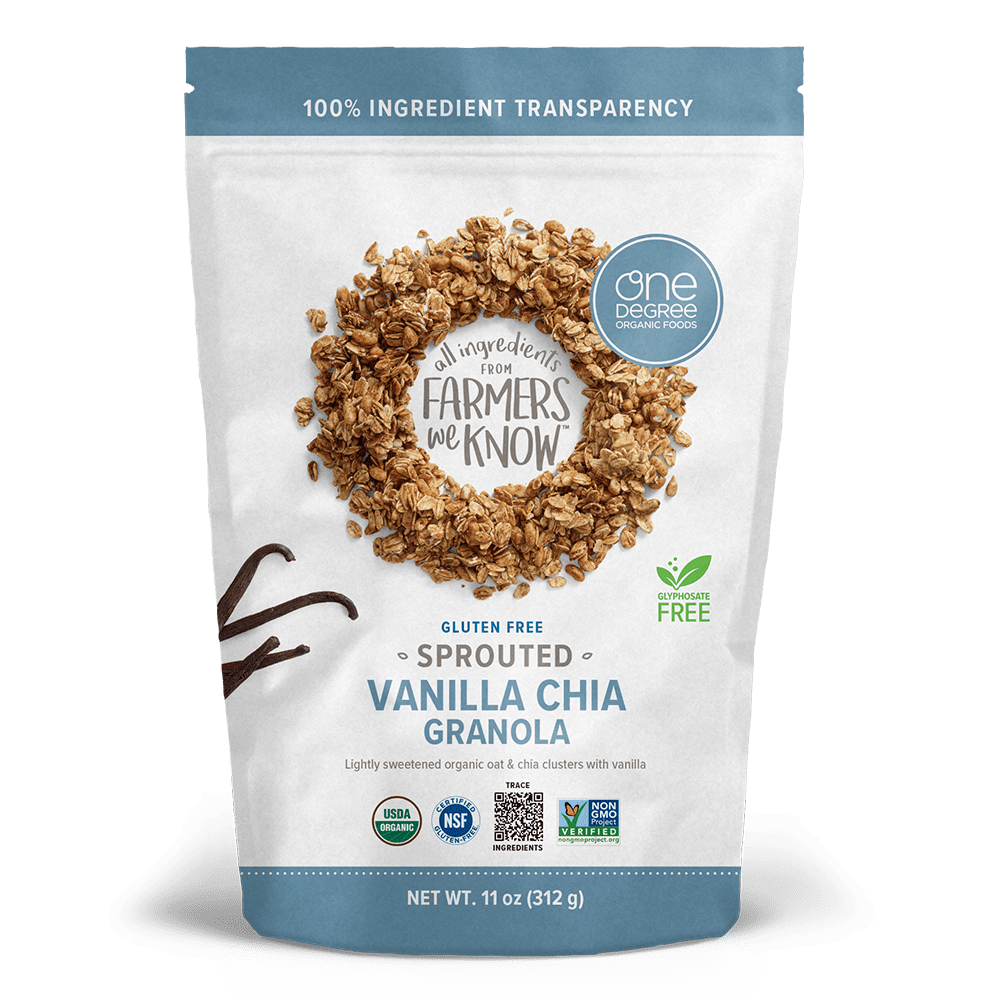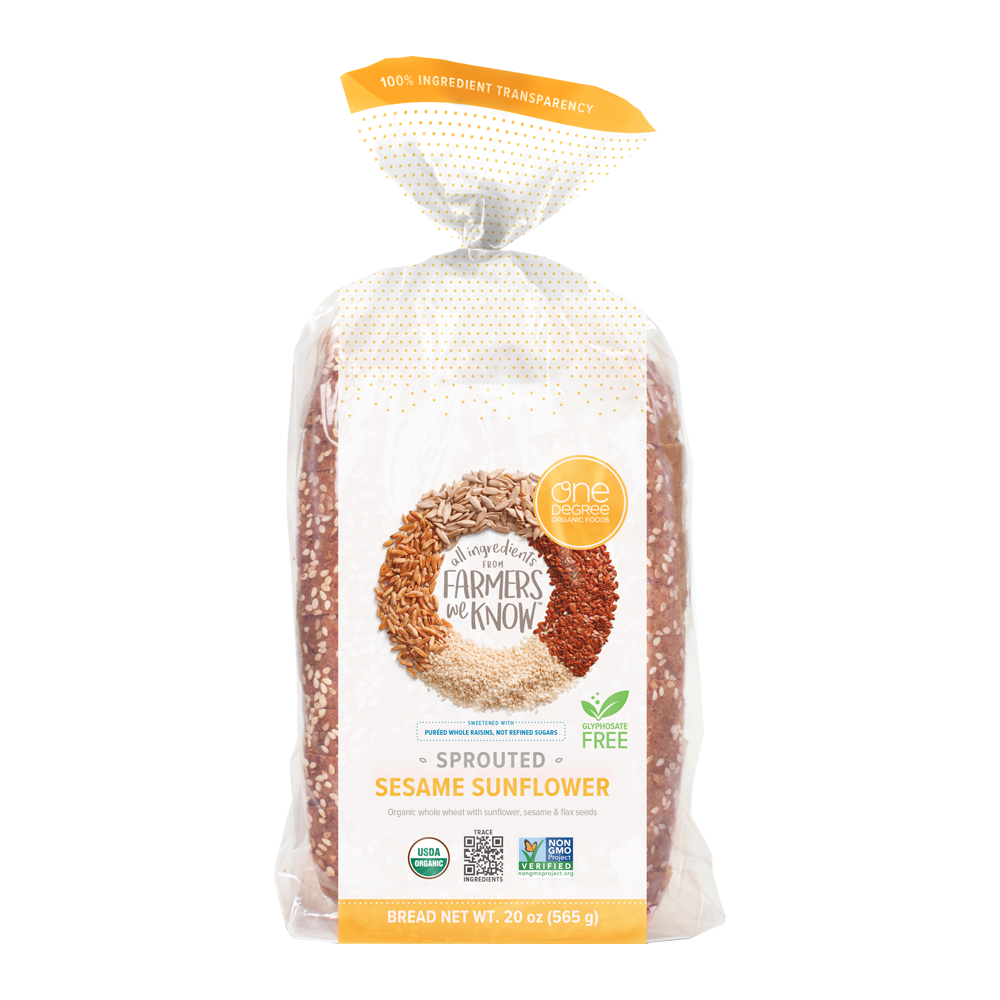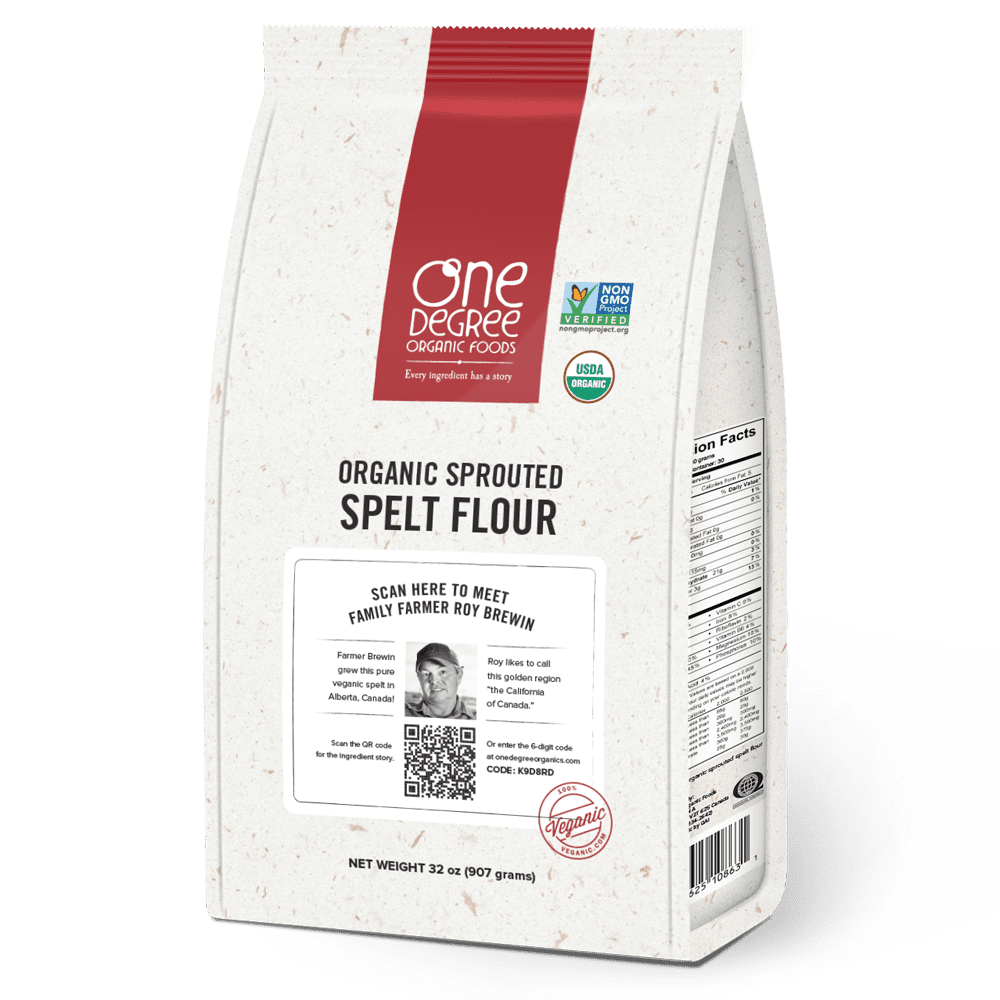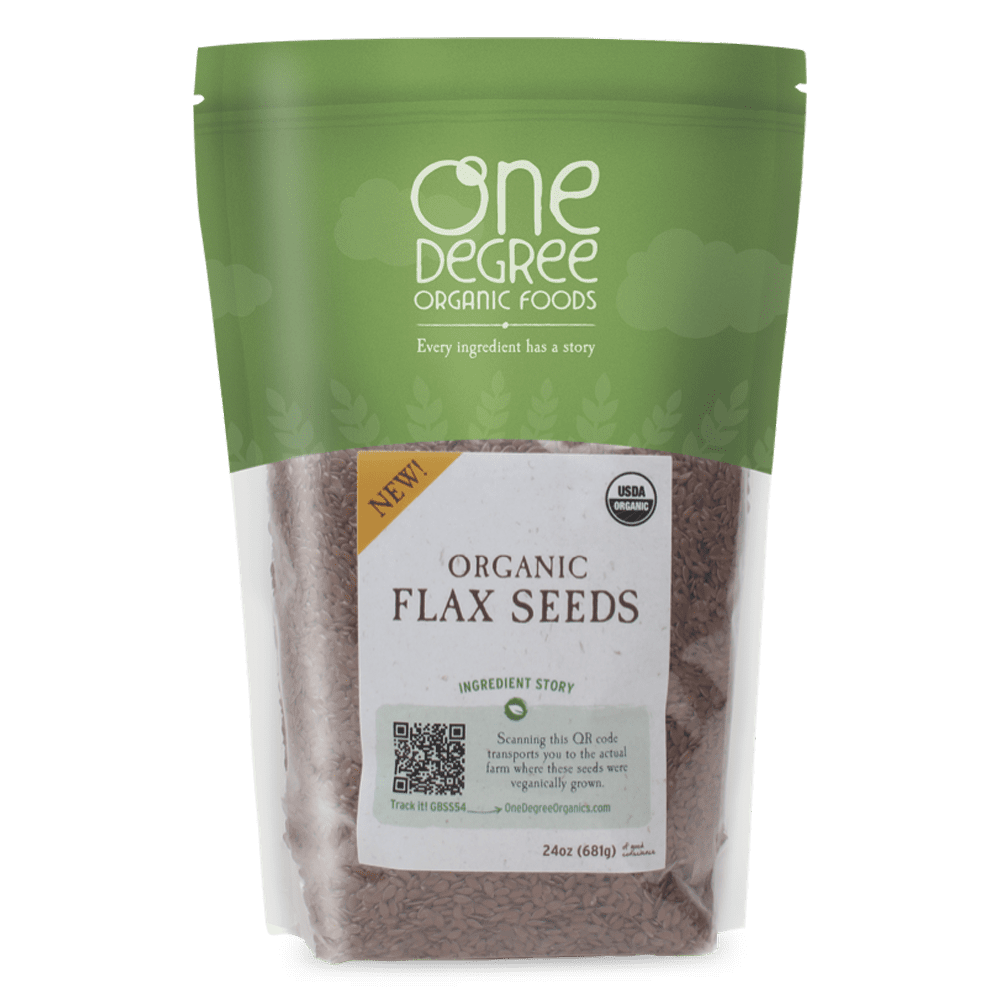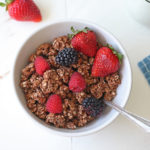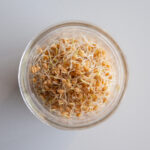Cacao: The Organic Superfood Ingredient
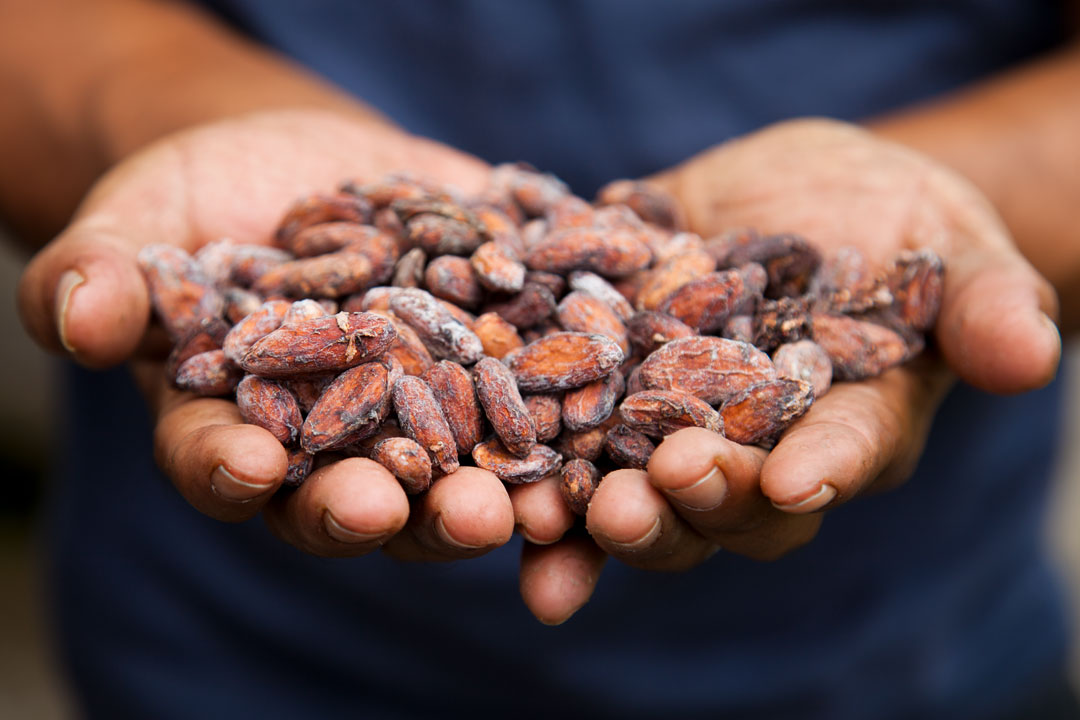
Some might have heard or read about dark chocolate being good for you. However, it’s not the dark chocolate that is good for you- it’s the cacao ingredient inside the chocolate that holds the benefits your body and taste buds love!
At One Degree Organics, we traveled around the world to source a superfood ingredient famously known as cacao. Why? Apart from its nutritional benefits, the organic cacao ingredient adds a rich and mouth-watering flavor to our; Cacao Mint Tea Infused Granola, Sprouted Cacao Nib Instant Oatmeal, Sprouted Brown Rice Cacao Crips, and our Sprouted Oat Quinoa Cacao Granola.
Join us as we explore how cacao is processed, discover the purest form of cacao, and answer nutritional questions like whether cacao is vegan, gluten-free, and caffeine-free.
What is cacao?
Cacao is also referred to as Theobroma cacao. Theobroma, is the Latin name, given by Swedish botanist Carolus Linnaeus directly translates to ‘Food of the Gods.’ Cacao, however, comes from the Nahuatl (Aztec) word xocolatl, which means ‘bitter water.’1
How is cacao grown? A cacao tree is born from a seed found in the cacao pod; the seed will not grow if it is dry. When the cacao tree grows it produces beautiful large leaves and cacao pods. These pods contain the beans used to make cacao nibs, chocolate, paste and more.
The cacao tree produces fruit, yes you read that right. When cracking open a cacao pod, you will find a juicy fruit layer which covers the key ingredient-cacao beans. The cacao tree is also referred to as an evergreen tree since it does not shed its leaves during colder months of the year, unlike other trees.
Where is cacao grown? The cacao evergreen tree is approximately 8m in height and is grown in warmer climates like its native Central and South America region.2
How does cacao taste? Well, when harvested the pods are opened to produce the cacao fruit pulp which covers the beans. The fruity pulp is sweet and juicy, however, the bean itself holds a bitter and more intense flavor. The bean is where all the nutrients and minerals are stored.
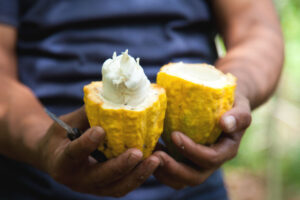
How is cacao processed?
It is not hard to see why there are so many chocolate lovers around, but apart from its mouth-watering taste there is a lot of work that goes into harvesting the cacao pods, processing the cacao beans, and ensuring the same beloved taste is enjoyed by millions around the world.
At One Degree Organics, we travel far and wide to locate the purest ingredients, when doing so, we visit the local farms, meet the farmers who educate us on how the ingredients are grown, and processed, and taste the quality for ourselves.
One of our farm partner’s Villa Andina is in Peru, they work alongside the local cacao farmers that provide us with the superfood ingredient found in all our cacao-based products. We have been fortunate enough to shake the hands of these cacao farmers in Peru who place the utmost care in harvesting these rich beans.
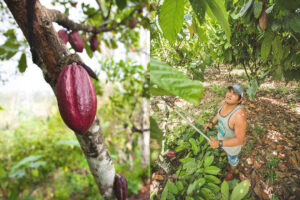
After the cacao pods have been harvested, the pods are opened to collect the cacao beans. The cacao beans are unloaded at their processing facility where quality assurance checks are completed to ensure cacao beans are free from plagues. Once the cacao beans have passed the quality checks, they are fermented to produce its rich deep flavor before being processed.
Types of cacao
The cacao beans can be processed into the following products;
- Cacao beans
- Cacao nibs
- Cacao paste
- Cacao butter
- Cacao powder
- Chocolate
When it comes to the beans the main challenge is the high humidity that can be a result of heavy rain. When beans are processed, they are placed in the sun or machine dryers to achieve the right humidity and placed through sieves to obtain purity.
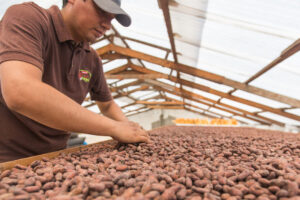
The cacao nibs are the first product that is obtained when processing cacao. The cacao bean is roasted or dried to obtain 4% humidity. According to our farm partner the cacao nibs found in our oatmeal’s, granolas, and cereals are the purest form of cacao.
Nibs also hold about 50%-55% cacao butter within the bean itself. Once the nibs have been formed it is then ground into smaller particles which form a cacao paste. The cacao paste contains cocoa solids and cocoa butter in their natural propositions.
The cacao paste is further refined by heating and mixing which enhances the flavor and improves the texture. The paste is then placed into molds, however, if it is being used to produce chocolate, it undergoes a tempering process.
Cacao butter is extracted from cacao beans using a hydraulic press which separates the cocoa butter from the cocoa solids. Once this is completed, the cacao butter will undergo a filtration process to ensure the butter is pure.
Cacao powder is obtained as a by-product of the cacao butter. This powder is produced by pressing out the cocoa butter from the cacao paste. When it comes to chocolate, however, cacao paste is refined even more and depending on the chocolate, sweetener, milk, and cocoa butter is added to produce the chocolate bars you love and know.
Cacao vs Cocoa
In simple terms, cacao is the raw form of cocoa. Cacao is transformed through the process of fermentation which develops the intense chocolate flavor, drying which ensures right humidity, then roasting, extracting, and grinding to produce cocoa powder.3
Are cacao nibs sweet?
Cacao beans and nibs have a more intense bitter taste, so it can be overpowering if used in natural form. Cocoa on the other hand, offers a mellower taste which is great for baking or making chocolate.
Health benefits of cacao
Cacao is a superfood filled with a rich source of nutrients and minerals that have numerous benefits. Let’s break down the ways in which cacao loves your body by discussing what the benefits of cacao really are.
Cacao nibs are a rich source of fiber, which is essential for maintaining good digestive health. And that’s not all, cacao beans are also rich in antioxidants that aid in reducing inflammation and damage to the body.
4
But wait there’s more! Cacao is one of the highest plant-based sources of magnesium. Why is magnesium important? Well, it’s the fourth most abundant mineral in the human body and magnesium deficiency is associated with cardiovascular, chronic, and inflammatory diseases. So, by consuming cacao you are providing your body with the much-needed boost of essential nutrients.5
Have you ever heard of flavonoids? In simple terms, they are a group of bioactive compounds that are associated with reducing the risk of cancer, cardiovascular disease, and neurodegenerative disorder. 6
Chocolate, cacao, cocoa have the highest levels of flavonoids than any other food. These bioactive compounds also support the body by regulating how it digests carbohydrates, now if this is not love, I don’t know what is.

Apart from all these benefits, cacao has the power to improve mental health. The amino acid called tryptophan is found within the cacao bean. Tryptophan is a compound which is used by the body to secrete our feel-good hormone, otherwise called serotonin. So, the next time you feel stressed or blue, release some tension by enjoying the rich and bold taste of cacao. 7
Cacao beans contain a high source of iron which is needed for producing protein for red blood cells that carry oxygen throughout the body. For vegetarians and pescatarians, cacao beans are an excellent source of iron. Cacao is not only delicious but also a superfood that can love you back with its rich benefits.
At One Degree Organics we only use cacao nibs in our products to ensure that every spoonful is packed with the beloved flavor of chocolate and the rich wholesome benefits of cacao.
Cacao nutritional facts
From cacao beans to, cacao nibs, powder, paste and chocolate, there are so many ways to enjoy this amazing ingredient. But, before you do, let’s get down to the nitty-gritty and answer the top questions about cacao.
Are cacao nibs vegan? Absolutely! Cacao is a plant-based ingredient, so if you plan to use it in its natural form, you have nothing to fear. Chocolate is made from cacao butter, powder, sugars, and milk, depending on what chocolate brand you love, and because of the milk it does not make it vegan or healthy with all the added sugar.
Is cacao gluten-free? Cacao is 100% gluten-free. Lastly, is cacao caffeine-free? Unfortunately, no. Cacao nibs contain around 4.6 mg of caffeine per spoon. But don’t worry, it’s not enough to keep you up all night.
This is how much nutritional value is in 3 spoons of cacao nibs:
| Name | Amount | Unit | %DV |
|---|---|---|---|
| Energy | 140 | kcal | |
| Protein | 3.99 | g | |
| Total lipid (fat) | 6.99 | g | 9% |
| Carbohydrate, by difference | 17 | g | 6% |
| Fiber, total dietary | 6.99 | g | 28% |
| Sugars, total including NLEA | 0 | g | |
| Calcium, Ca | 75 | mg | 8% |
| Iron, Fe | 0.999 | mg | 6% |
| Magnesium, Mg | 160 | mg | 40% |
| Potassium, K | 250 | mg | 8% |
| Sodium, Na | 20.1 | mg | 1% |
| Vitamin D (D2+D3) International Units | 0 | IU | |
| Fatty acids, total saturated | 3.51 | g | 18% |
| Fatty acids, total trans | 0 | g | |
| Cholesterol | 0 | mg |
Table sourced from: U.S Department of Agriculture, FoodData Central Search Results
At One Degree Organics, we take pride in sourcing our cacao with love and care. Our cacao-based products are not only delicious but also ethically sourced. If you are looking for some mouth-watering cacao recipes, look no further! We have a list of amazing Family Recipes for you to try out. And if you want to stay up to date on our latest news, recipes, products, and farmers, sign up for our newsletter today.
References:
- Oxford University, Department of Plant Sciences, 2015. Available from: https://herbaria.plants.ox.ac.uk/bol/plants400/Profiles/ST/Theo Accessed December, 2023
- Plants For A Future, Plants For A Future Species Database Bibliography. Available from: https://pfaf.org/User/Plant.aspx?LatinName=Theobroma+cacao Accessed December, 2023
- WedMD, Difference Between Cocoa and Cacao July, 2023. Available from: https://www.webmd.com/diet/difference-between-cocoa-and-cacao Accessed December, 2023
- UCLA Health, Good choices: Antioxidant-rich foods for holiday health November, 2023. Available from: https://www.uclahealth.org/news/good-choices-antioxidant-rich-foods-holiday-health Accessed December, 2023.
- National Library of Medicine, Magnesium in Prevention and Therapy. Available from: https://www.ncbi.nlm.nih.gov/pmc/articles/PMC4586582/, Accessed December, 2023.
- National Library of Medicine, Flavonoids-food sources and health benefits. Available from: https://pubmed.ncbi.nlm.nih.gov/25272572/, Accessed December, 2023.
- Very Well Health, The Benefits of Raw Cacao. Available from: https://www.verywellhealth.com/cacao-7490807, Accessed December, 2023.
